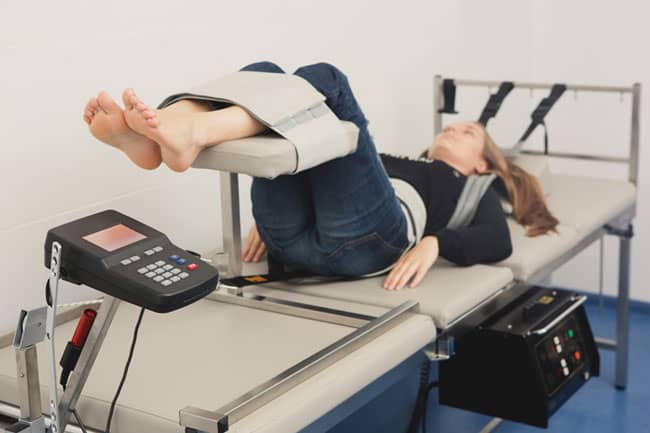How Spinal Decompression Works
Those who experience lasting back pains will know that this can affect day-to-day life. Patients look for different ways to relieve the pain and prevent disruption. Many people use spinal decompression therapy to aid their healing.
Spinal decompression relieves the pressure in one or few pinched nerves of the spinal column. It treats back pain caused by a variety of conditions. There are two types of spinal decompression: surgical and nonsurgical.

Nonsurgical Spinal Decompression
This kind of spinal decompression uses a motorized traction device to relieve back pain. This stretches the spine gently and changes the position and force of the spine. Such changes help in taking the pressure off the spinal discs and may help retract bulging discs and take the pressure off of nerves. It can promote movement of oxygen, nutrients, and water into the discs so they can heal.
In a nonsurgical session, the doctor will fit the patient with a harness around the pelvis and around the trunk while lying down on a computer-controlled table. The doctor operates the table depending on the specific needs of the patient. Sessions last up to 45 minutes and may require 20 sessions or more.
Nonsurgical spinal decompression is used to treat neck pain, herniated discs, injured spinal nerve roots, and worn spinal joints.
Surgical Spinal Decompression
This is another option for addressing other types of back pains. The surgical spinal decompression is usually the last resort for treatment, if other measures don’t work for the patient. This is commonly suggested for those experiencing bony growths, ruptured discs, and other spinal issues.
The doctor may suggest one or more types of surgeries to relieve the pressure. Some of the most common surgeries are: diskectomy, osteophyte removal, laminotomy, corpectomy, and foraminotomy. Aside from surgery, the patient may also need spinal fusion for stabilizing the spine.
Surgery can help relieve the pressure on nerves and spinal cord and other symptoms like numbness, pain, weakness, and tingling sensation.

Hi,
I was looking at your really neat “How Spinal Decompression Works” poster online.
It looks great. I was wondering what studies were referred to when it says that Surgery for nerve root is successful in relieving pain in 80-90% of patients.
I read that surgery is “successful” in 90% of the patients. Meaning that the patient does not die or get worst than they were before the surgery. 10% of the patients are absolutely worse after surgery. I read that about 47% of patient are temporarily better and half of those patients who got relief from their pain from surgery will get the pain back within a few years (2-3 years).
This is really a nice post that you have though. There are other solutions for lower back pain other than surgery.